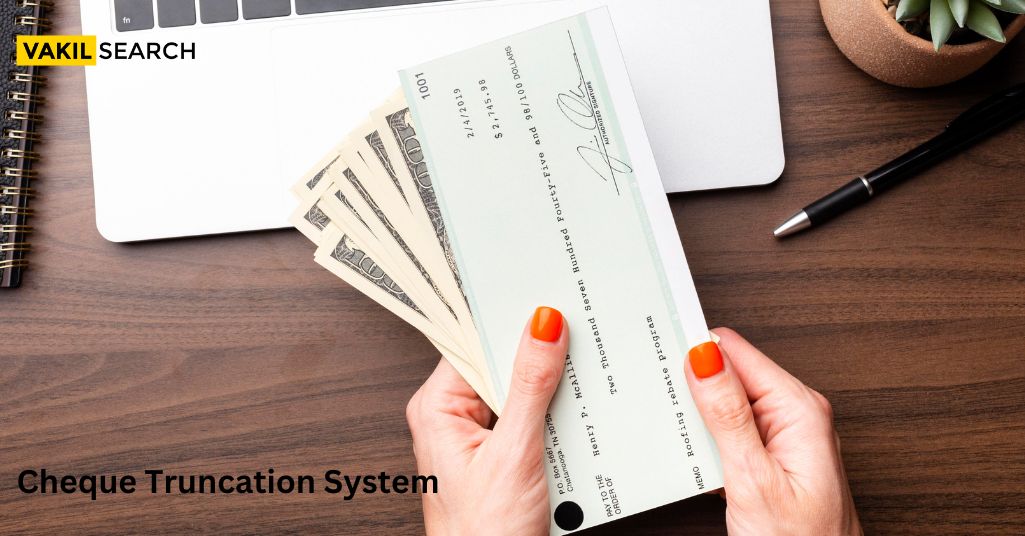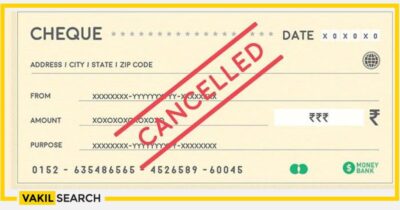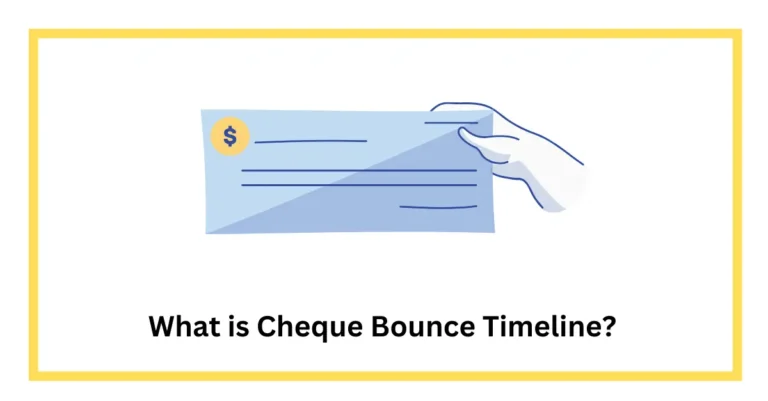The Cheque Truncation System (CTS) has brought about a paradigm shift in how cheques are processed in banking, ensuring faster clearing and a more eco-friendly approach.
The Cheque Truncation System (CTS) has brought about a paradigm shift in how cheques are processed in banking, ensuring faster clearing and a more eco-friendly approach. Primarily popular in advanced economies, its adoption in India signifies a move towards modern, efficient, and digitised banking systems. Let’s explore deeper into understanding CTS, its benefits, and its impact on the Indian banking system.
What is Cheque Truncation System?
At its core, Cheque Truncation System refers to the process where the physical movement of a cheque is halted or ‘truncated’ at some point during the clearing process. Instead of the physical cheque being presented to the drawee bank, an electronic image of the cheque is sent for payment verification and settlement.
How does CTS Work?
Transitioning from Physical to Digital: When a customer deposits a cheque in the bank, the bank captures the data (MICR details) and the images of the cheque using specialised scanners or CTS machines. The details and the image are then sent electronically to the clearinghouse and subsequently to the drawee bank. The cheque is then processed based on this electronic data and image, without involving any physical movement.
Benefits of the Cheque Truncation System
- Speedier Clearing: CTS speeds up the process of cheque clearance, payment, and receipt of funds. While traditionally cheques could take several days to clear, with CTS, it can be done within a day.
- Environment Friendly: The elimination of physical transportation means a reduced carbon footprint, making CTS an eco-friendly banking solution.
- Enhanced Security: Digital transmission reduces the risk of cheque loss or theft during transit.
- Cost-Effective: Banks save on transportation and manual intervention costs. This could potentially lead to lower banking charges for customers in the long run.
- Better Customer Service: Faster clearance times, prompt resolution of discrepancies, and reduced chances of cheque-related frauds contribute to improved customer satisfaction.
Impact on the Indian Banking System
- Adoption of Modern Practices: CTS aligns India with global best practices in the banking sector. The digital transformation shows India’s commitment to adopting the latest technologies for enhanced service delivery.
- Stimulating Digital India Initiative: CTS fits well into the ‘Digital India’ initiative, a flagship program of the Indian government aiming at digitally empowering the country.
- Enhanced Trust: With better security protocols, customers’ trust in the cheque clearing process has been reinforced, reviving the utility of cheques in the era of digital transactions.
Key Considerations for Effective CTS Implementation
- Infrastructure Upgradation: For seamless CTS operations, it’s imperative that banks invest in high-quality imaging and MICR capture devices.
- Training Personnel: Employees need to be trained to understand the nuances of CTS to ensure error-free operations and adept handling of the system.
- Awareness for Customers: Banks should run awareness campaigns to educate customers about the changes, benefits, and any new guidelines related to cheque usage under CTS.
The Future of CTS in India
As India steers towards a digital economy, CTS serves as a bridge, ensuring that traditional instruments like cheques continue to remain relevant by adapting to modern processing techniques. The Reserve Bank of India’s push for CTS adoption across all banks further reaffirms the importance and relevance of this system.
In the foreseeable future, as technology continues to evolve, we can expect further enhancements in CTS, making cheque-based transactions even more streamlined and user-friendly. Integration with other digital systems and leveraging technologies like artificial intelligence can further revolutionise this space.
New Cheque Bounce Rule
In August 2021, the Reserve Bank of India (RBI) issued a notice that has significant implications for individuals who rely on cheques for their financial transactions. Under these new regulations, customers conducting financial activities involving cheques, or those with plans to do so, must maintain a minimum bank balance. Failure to meet this balance requirement could result in bounced cheques and penalty fees for the customer issuing the cheque.
These regulations, affecting both national and private banks, were implemented to expedite and streamline the cheque clearing process. One crucial aspect of this rule change is the round-the-clock operation of the National Automated Clearing House (NACH), ensuring that cheques can be processed and cleared even on Sundays.
This development represents a proactive step by the RBI to modernise and improve the efficiency of the banking sector, benefiting customers who depend on cheques for their financial transactions. It encourages timely maintenance of bank balances and facilitates smoother cheque processing.
Remedies Against Cheque Bounce
Resubmission of Cheque
In cases where a cheque bounces due to various issues like overwriting, signature mismatch, discrepancies in the cheque amount (in words and figures), or a damaged cheque, the payee has the option to request the drawer to provide a replacement cheque to rectify the error. If the drawer agrees and submits another cheque, it can resolve the situation amicably. However, if the drawer refuses to issue a replacement cheque, the payee retains the right to initiate civil action against the drawer to recover the due cheque amount, addressing the root cause rather than the bounce itself.
Cheque Bounce Notice under Section 138 of the Negotiable Instruments Act
A cheque bounce notice, as per Section 138 of the Negotiable Instruments Act, comes into play when a cheque bounces due to insufficient funds in the drawer’s account to cover the payment. This notice is a legal requirement when the primary reason for the bounce is the lack of necessary funds. However, if the cheque bounces for reasons other than insufficient funds, such as those mentioned earlier (overwriting, signature mismatch, etc.), the provision of Section 138 may not be applicable. In such cases, the payee can instead request the resubmission of the cheque to address and rectify the specific issue.
How to Respond to a Cheque Bounce Case
In the event of a cheque bounce case, your response is crucial to either resolve the matter or face potential legal proceedings. Here’s a guide on how to respond effectively:
Consult a Legal Practitioner
The first step upon receiving a legal notice regarding a cheque bounce should be to consult a legal practitioner who specialises in such cases. Their expertise will be invaluable in guiding you through the process.
Payment or Defence
At the outset, you have two choices. You can either make the payment for the bounced cheque amount to settle the matter promptly or proceed with a legal defence. Payment at this stage can lead to an amicable resolution.
Structure of the Reply
If you opt for a legal defence, your reply to the legal notice does not need to adhere to a specific format. However, ensure that it covers the following key elements:
- Address the reply to the lawyer representing the drawer of the cheque.
- Include your personal details: name, address, and description.
- Present the facts of the issue, including the date of cheque issuance, the cheque-return memo, and any other pertinent details.
- Rebut the allegations made against you, avoiding any admissions.
- If applicable, mention any complaints against the drawer of the cheque.
- Provide a concise summary of your defence against the allegations specified in the legal notice.
Sending the Reply
It is essential that your reply to the legal notice is sent on a lawyer’s letterhead, which lends it a professional and credible appearance.
Timely Response
Failure to respond to the legal notice or make payment within 15 days may prompt the drawer to initiate legal proceedings by filing a complaint in court. Timely response and action can help prevent legal consequences.
Conclusion
Cheque Truncation System has redefined cheque clearing in India, aligning it with international standards. The strategic adoption of CTS not only amplifies the efficiency and security of cheque-based transactions but also underscores India’s broader vision of digital transformation in banking. As customers and banks alike experience the manifold advantages of CTS, it stands as a testament to the future-ready approach of the Indian banking sector.
FAQs
What is the legal notice for a cheque bounce?
A legal notice for a cheque bounce is a formal communication sent by the payee to the drawer of the bounced cheque, demanding the cheque amount's payment and warning of legal action if necessary.
What is the bounce notice period for cheque 138?
The notice under Section 138 of the Negotiable Instruments Act typically has a 30-day notice period, which means the drawer must make the cheque amount's payment within 15 days from receiving the notice.
What happens if notice is not received in a cheque bounce case?
If the drawer of the bounced cheque does not receive a legal notice within the prescribed time, it may delay the legal process but does not eliminate the obligation to settle the payment.
Can a 138 notice be sent after 30 days?
Generally, the notice should be sent within 30 days from the date when the cheque is returned unpaid. Sending it after 30 days may weaken the legal claim but is not explicitly prohibited.
What is the time limit for a legal notice in a cheque bounce case?
The legal notice for a cheque bounce should be sent within 30 days from the date of receiving the information from the bank that the cheque has bounced.
Can a legal notice be sent without a lawyer?
Yes, a legal notice can be sent without a lawyer, but it's advisable to seek legal counsel for precise wording and compliance with legal requirements.
Can I reply to a legal notice without a lawyer?
You can reply to a legal notice without a lawyer, but it's recommended to consult with a legal expert, especially in complex cases.
What happens if a legal notice is not received?
If the intended recipient of a legal notice does not receive it, the legal process may proceed based on the proof of delivery and postal records.
Can a legal notice be sent by WhatsApp?
A legal notice can be sent via WhatsApp or other electronic means, but ensuring its authenticity and legality may require additional steps, such as digital signatures.
Is a legal notice valid without a signature?
A legal notice is generally considered valid without a physical signature, but the sender's identity and authenticity of the notice must be established through digital signatures or other legally recognised methods.
Other Important topics









